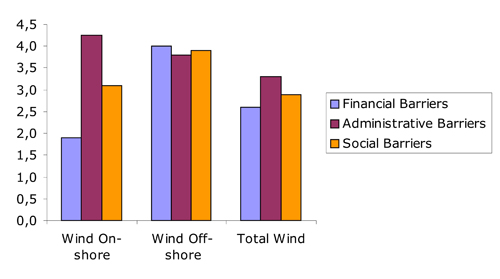MAIN PUBLICATION :
| Home � ENVIRONMENT � Social acceptance of wind... � Social research on wind energy offshore |

|
The Social Research on Wind Energy Offshore
In recent years, there has been a growing interest in the analysis of the public reactions to offshore wind power. Although the available empirical evidence is much more limited than that available for onshore wind development, studies from different countries have explored the main factors shaping public attitudes towards offshore projects as well as whether public acceptance differs between offshore and onshore.
As was the case with wind onshore, at the first stages of the technological development the physical and environmental attributes are the ones attracting more attention from social researchers. Offshore projects could also face negative reactions and promoters should be aware that ‘coastal communities are just as sensitive to threats to seascapes as rural society is to visual disturbance in highland areas’ (Ellis et al., 2007, p536). A study of residents near a proposed development near Cape Cod in the US (Firestone and Kempton, 2007) found that the main factors affecting individuals’ reaction to the offshore project were damage to marine life and the environment. The next most frequently mentioned effects were aesthetics, impacts on fishing or boating, and electricity rates. The majority of participants expected negative impacts from the project. However, the project was more supported if turbines were located further offshore. Bishop and Miller (2007), by means of a survey using offshore wind farm simulations in Wales, found less negative response, in terms of perceived visual impact, to moving than to static turbines and to distant than to near turbines.
The available evidence on the psycho-social, social and institutional factors underlying the acceptance of wind offshore in the EU is to be found in Denmark, the country with the longest experience with offshore developments. A longitudinal study using qualitative techniques compared the reactions to Horns Rev and Nysted offshore wind farms (Kuehn, 2005; Ladenburg, in press). The authors found that at both sites, support for the project was linked to environmental attitudes, in a context of climate change and commitments to reduce CO2 emissions. Another key argument for support was the expected occupational impact at the local level, in other words the expected number of jobs to be generated by the wind development. On the other hand, negative attitudes were based on concerns about visibility and negative impacts on the horizon. At Horns Rev opposition centred on business interests and tourism, while at Nysted the crucial issue was the need to not interfere with nature and preserve it as it was (‘intact’). Regarding the planning process, most interviewees showed a feeling of being ignored in the decisionmaking process, as the decision on the wind park had already been taken by central authorities. Supporters tended to be active in the local debates. A recent study in Denmark (Ladenburg, 2008) has compared local attitudes towards offshore and onshore projects. The study finds that respondents tend to prefer offshore to onshore. Even if onshore wind power is perceived as an acceptable solution to the Danish public (only 25 per cent were opposed to an increase in the number of turbines onshore), respondents were more positive to more offshore wind turbines (only 5 per cent of respondents were opposed).
As far as key stakeholders in the development of renewable energies are concerned, as mentioned in the previous section, the OPTRES study demonstrates that the administrative and regulatory barriers are perceived to be the most severe to the development of wind offshore.
Even though, as the Figure V.6.5 illustrates, the importance attributed to the different barriers varies substantially from onshore to offshore. The accumulated experience in onshore and the lack of it in offshore may be a relevant factor in this regard, together with the management of the interaction between the technology and the community. Consequently, another important message can be drawn from this extensive stakeholder consultation: offshore and onshore wind seem to present relevant differences in the relative perceived importance of the barriers to their development.
Figure 6.5: Stakeholders' Perception of the Barriers to Wind Development in the EU

Source: Coenraads et al. (2006)
| Sitemap | Partners | Disclaimer | Contact | ||
|
coordinated by  |
supported by  |
The sole responsibility for the content of this webpage lies with the authors. It does not necessarily reflect the opinion of the European Communities. The European Commission is not responsible for any use that maybe made of the information contained therein. |
